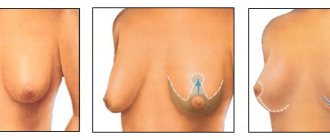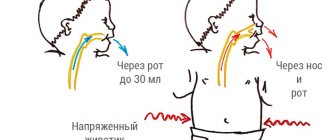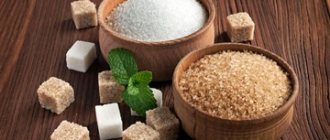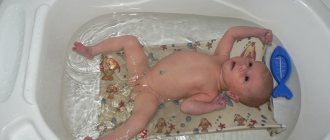The birth is over, the long-awaited baby is snoring peacefully in the crib, you are already home, which means it’s time to return to your old life. The most important thing for most young mothers is to regain a slim figure, but at the same time not harm breastfeeding. Do you want us to make you happy? This is very real, because nature itself helps you get back on track, and breastfeeding is the best way to lose weight as quickly as possible after childbirth.
In this article, experts from the Wellness Consulting Academy will tell you how to quickly lose weight after breastfeeding, maintaining excellent lactation and a great mood...
How to lose weight after childbirth while breastfeeding
If you have taken offline or online courses for pregnant women, then you probably know that it is much easier for nursing mothers to lose weight than for those who switched their baby to artificial feeding. This process will be gradual so as not to harm lactation and the health of the child.
On average, comfortable gradual weight loss during breastfeeding will take about six months, that is, even before introducing complementary foods to your child, you will already be able to enjoy a beautiful figure and flaunt your new wardrobe.
Of course, you will have to work on your diet, but besides this factor there are several other great ways to effectively shape your figure:
How to exercise to quickly lose weight after childbirth for a nursing mother?
Resource-intensive sports are not available to women during breastfeeding, but this does not mean that they need to completely abandon physical activity. To get in shape faster after pregnancy and childbirth, experts recommend:
- Walk more with a stroller. A one and a half hour walk will strengthen the muscles of the pelvis and legs and save 600 calories.
- Return to light exercise 6 to 8 weeks after your baby is born. At home, you can squat, do push-ups from your knees, do a “bicycle”, swing a straight leg, do a glute bridge, lift your torso from a prone position, and jump rope. Yoga, swimming, and Pilates are also suitable for nursing mothers.
- Start with light exercises and gradually increase the load.
THIS IS NOT AN ADVERTISING. THE MATERIAL WAS PREPARED WITH THE PARTICIPATION OF EXPERTS.
Walk with your child as much as possible
Do you remember the WHO recommended norm of 10,000 steps per day? So, with your baby you will easily follow it every day and, most likely, you will begin to go through much more. All you need to do is go for a walk in the fresh air 2-3 times a day.
Walk for at least an hour. Just don’t sit on the bench, but carry the stroller with the child. Explore new places in your area. When the child grows up a little, it will be very interesting for him to watch the constantly changing picture from his stroller. Show your baby everything you see on your walk: growing flowers and trees, animals and birds, a playground, buildings, natural phenomena, other children.
Just imagine, because he sees all this for the first time. His eyes will watch everything with delight, and his hands will want to try everything by touch. Introduce your baby to this world, and he will teach you to enjoy simple things, notice the beauty in what is nearby, and appreciate every day you live.
You might have forgotten these feelings when you grew up, but now it’s time to once again admire the raindrops hitting a puddle, the birds singing outside, the rustling of leaves, the blossoming trees.
Sleep during the day with your baby
Babies always sleep during the day, several times. This is an excellent opportunity to also restore strength and compensate for lack of sleep at night if the child was restless at night. However, many mothers make the same mistake: they put the baby to bed and let them do all the housework - ironing, washing, washing the floors, dusting, cooking.
All this, of course, must be done, but not to the detriment of oneself. No one has ever suffered from unironed diapers, but from a sleep-deprived mother who is tired, exhausted, and irritable, the whole family can suffer.
Therefore, sleep with your child, and do household chores when your husband returns home after work or other relatives come to visit and can look after the baby.
Be physically active
You can return to active training 3 months after birth, when the uterus has completely contracted and the body has recovered from hard work. However, light exercises and short runs can be started a couple of weeks after discharge from the hospital.
Losing weight during breastfeeding will go at a much faster pace if you begin to devote 3-5 hours a week to physical activity. Choose what you like:
- yoga;
- fitness;
- Pilates (you can do it directly with your baby, as well as stretching, gymnastics, exercises on a fitball);
- swimming (infant swimming is also popular now, because it teaches the baby to confidently float on the water when he still has no fear of drowning, and the natural instinct to swim has not been forgotten).
If it’s convenient and comfortable for you, train with your baby - then you won’t have to decide who to leave him with during the lesson, how he is doing while you’re training, whether he’s crying without his mother. In addition, in this way you will show your little child an excellent example of a healthy lifestyle, because until adolescence, parents for him are an authority that is worth emulating.
Do you want your little one to have no problems with motivation and determination in the future? Then show him how you yourself work through these moments and fight laziness.
Wraps
How to lose weight after childbirth for a nursing mother using wraps:
- use only natural mixtures;
- do the procedure in courses, 10-12 times. Otherwise, there will be no effect.
A woman undergoing breastfeeding can use the following natural mixtures for wrapping:
- Made from green clay. To prepare the mass, pour clay powder into a bowl, which you can buy at a cosmetic store. Pour in warm water, stirring the mixture constantly. The consistency of the finished mass will be similar to thick sour cream. The finished mass is applied to problem areas in a thick layer. Let it dry and wrap the problem area tightly.
- With chocolate. Combine high-quality cocoa powder in a bowl and dilute it with warm water. The mass should be thick. Apply it to problem areas, let dry and wrap with film.
Wrapping time is approximately 60-100 minutes.
Take a contrast shower in the evenings
This is a great way to relieve physical and mental stress, quickly restore energy and clarity of thoughts, and also massage the entire body with water jets. A contrast shower has a beneficial effect on the vascular system and skin, thanks to which your body quickly becomes toned.
After a contrast shower, your metabolism improves, which means that the fat burning process will also speed up, and this is very important for weight correction.
Rock your baby on a fitball
Have you noticed that many babies fall asleep well while traveling in public transport or while walking in a stroller? Rhythmic rocking has a soporific effect on babies, so it’s worth taking advantage of.
There is a great way to rock your baby to sleep at home, quickly and beneficially for your figure. To do this, you will need a regular medium-sized fitball. Sit comfortably on it, pick up the child in your arms and, pushing off the floor with your feet, begin to bounce rhythmically on the ball.
After a couple of minutes, most babies fall asleep sweetly, and it is easy to transfer them to the crib to continue sleeping. And from regular exercise you will pump up your legs, buttocks and abs. The process of motion sickness will become much easier, you won’t have to strain your arms walking around the room with a baby who is constantly gaining weight, and it will also be good for your figure. Losing weight after childbirth will definitely accelerate.
Proper nutrition for weight loss during breastfeeding
One of the most effective ways for a nursing mother to lose weight at home after childbirth is to radically reconsider her usual diet. You should not adhere to the well-known recommendation to “eat for two.” This will only add a few extra centimeters to your waist, but will not help you lose weight.
All food should be low-calorie, but nutritious, containing all the necessary vitamins and minerals. It is necessary to completely exclude from the diet all foods that are potential allergens - strawberries, oranges, other citrus fruits, nuts, mushrooms, seafood, chocolate, honey.
Meals should be frequent and divided - at least 5 meals per day. You also need to monitor the daily calorie content of all the dishes you eat - for this, it is most convenient to keep a food diary, recording everything you eat during the day.
Be a woman
Your task is to remain a loved and loving woman even after childbirth. There is no need to put yourself on the altar of motherhood, becoming a submissive housewife or a slave who only thinks about how everything will be fine for everyone. You must love yourself, include healthy selfishness at times, devote time to your favorite hobby, meeting with friends, walking alone, taking care of your body.
There is nothing wrong with someone else looking after the child temporarily. The best mother is a happy mother, and you should definitely become one. Every day, do not forget to pay attention and time to your husband, then he will not be jealous of your baby and will be able to be a wonderful father for him.
Thank your body for doing the hard work of creating new life. Compliment him, be proud of every inch of yourself. Loving your body and respecting your values will make it much easier for you to lose weight after giving birth.
Practices like “Body and Mind”
Breastfeeding mothers cannot immediately begin serious training, so the “Body and Mind” practice, which includes yoga, Pilates and meditation, is an excellent solution for them. You need to approach the choice of a certain type of class wisely, since not every type of yoga is suitable for a nursing mother.
Hatha yoga is a safe way for a nursing mother to lose weight after childbirth
It is best to choose a type of activity that involves smooth, unhurried movements. An excellent solution would be hatha yoga. It will allow you to relax and strengthen your muscles at the same time. Thanks to such activities, any mother will be able to recharge her batteries and get a lot of positive emotions.
Meditation will achieve the following results:
- the mood for losing weight will improve;
- the figure will become more toned, the back will be straight, the stoop will disappear;
- performance will increase, life potential will increase;
- vigor of body and spirit will accompany you all day;
- appetite will decrease;
- depression and oppression will go away.
As a result, the weight will begin to gradually melt away without harm to the body.
How to lose weight after childbirth for a nursing mother with the help of Pilates:
- start any exercise with minimal load. Then you can increase them;
- There should be no discomfort or unpleasant sensations during exercise. If they appear, you should give up Pilates at least for a while;
- You need to exercise in the most comfortable clothes that will not hinder movement;
- Between approaches you need to take rest intervals;
- the workout should last at least 40 minutes;
- It is recommended to adhere to proper nutrition, then weight loss will be faster.
Nutrition while breastfeeding
And now it’s time to talk about the fundamental thing - nutrition during breastfeeding. It also has its own rules and features. Here's what you need to follow if you want to lose weight quickly and easily during breastfeeding:
Why some women don't lose weight while breastfeeding
Losing weight while breastfeeding may not be equally easy for all mothers.
A deficit of 500 calories per day could theoretically help breastfeeding mothers lose about 0.45 kg per week, for a total of about 1.8 kg per month ().
Therefore, breastfeeding mothers who gain the recommended 11.5-16 kg during pregnancy should be able to lose this weight within the first 6-8 months after birth ().
However, many breastfeeding mothers take longer than this interval to lose weight after giving birth. In fact, research shows that many women only lose up to 86% of the weight they gained during pregnancy during the first 6 months after giving birth ().
Moreover, some studies have found no difference in weight loss between breastfeeding and non-breastfeeding mothers overall (, ).
The reasons why some women have a harder time losing weight while breastfeeding may vary.
On the one hand, breastfeeding leads to an increase in hunger. Research shows that some women eat more and move less while breastfeeding, which offsets the additional calories expended during breastfeeding ().
New moms also tend to have irregular and interrupted sleep patterns. Sleep deprivation is another known factor in increasing hunger and appetite—both of which can make weight loss more difficult (, , ).
Summary:
Not all breastfeeding mothers lose weight easily. Increased hunger and lack of sleep can be two factors that can make it difficult to lose weight naturally after your baby is born.
Observe the caloric intake and the correct ratio of BZHU
Do you remember that a pregnant woman’s diet to prevent large weight gain should contain only 500 kcal more than the daily calorie requirement? It’s not worth eating for two, otherwise you’ll gain a lot and also feed the baby.
The situation with nutrition during breastfeeding is similar: 300-500 additional calories are what you need to produce milk. The principle “the better you eat, the better quality and fattier the milk” does not work here.
For good lactation you do not need a lot of food, but quality products in a balanced menu. Therefore, adjust your diet according to energy value, vitamin and mineral composition, as well as the correct ratio of dietary fat (we describe in detail what parameters to adhere to in our online courses for pregnant and lactating women).
When can you start losing weight after giving birth?
It all depends on what kind of feeding the newborn is on. If on an artificial one, then the young mother only needs to wait for the body to recover after childbirth and after 3-6 months take care of her figure.
Recommended articles on the topic:
- Ultrasonic facial peeling is a pleasant and beneficial procedure for your skin
- Redermalization of the skin: all the pros and cons
- Almond peeling for the face: features of the procedure
If a woman is breastfeeding, then she will have to forget about the diet for now. She must eat for two, taking into account the fact that her diet affects the well-being of the baby. Therefore, nutrition must be correct. Only after gradually transferring the baby to the common table can a young mother begin to lose weight.
Give preference to healthy foods
The diet of a pregnant woman is not much different from the diet of a nursing mother. You, as before, should choose only high-quality natural products:
- seasonal vegetables, fruits and berries (you can buy frozen ones during the off-season);
- whole grain cereals, bread and pasta;
- lean meat and fish (chicken, turkey, veal, rabbit, quail);
- freshly squeezed juices and smoothies;
- low-fat dairy and fermented milk products;
- eggs;
- legumes (if the baby is not prone to colic).
Gluten-free diet for nursing mothers
Gained popularity all over the world. It is considered a safe way to lose weight. Does not cause harm caused by gluten. The latter refers to protein that, due to individual characteristics, is not absorbed by the body. Many experts call gluten nothing more than a “gateway” to a toxic load: by enveloping the intestines, it reduces the ability to move food, which, when delayed, begins to ferment. Subsequently, increased gas formation is observed.
The advantages of a gluten-free food system are obvious:
- The diet remains balanced and varied, despite exceptions.
- Eating according to the rules helps the body get rid of toxins accumulated over the years.
- Fasting is excluded.
- The result is visible even with minimal effort.
Gluten can be hidden in confectionery, pasta and bakery products, ice cream, convenience foods, store-bought spices, canned meat and fish, sausages, and imitators of natural products. Wheat, oats, barley and rye are completely excluded from the diet.
Recommended for use:
- boiled, stewed or steamed low-fat meat;
- soups with weak meat broth;
- milk and dairy-free porridges made with millet, rice and buckwheat;
- boiled chicken eggs;
- dairy and fermented milk products;
- root vegetables, berries and fruits;
- vegetable and butter;
- bread and pasta substitutes;
- honey;
- berry drinks, fruit jelly, loose leaf tea.
Approximate daily menu
- Breakfast: rice milk porridge, fresh berries, loose leaf tea.
- Snack: dried fruit compote, cornbread.
- Lunch: soup in weak meat broth with rice, buckwheat pancakes, berry juice, baked fish, vegetable salad.
- Afternoon snack: fruit, still mineral water.
- Dinner: buckwheat porridge, stewed vegetables, kefir, a spoonful of honey.
In a week on a gluten-free diet you can lose from 2 to 4 kg.
Avoid unhealthy foods and dishes
The following are prohibited when breastfeeding:
- fast food and convenience foods;
- sausages and canned food;
- carbonated drinks;
- anything that contains a large amount of food and chemical additives;
- mayonnaise and other products with trans fats;
- deep-fried, spicy, peppered, pickled, highly salted dishes (all this can cause colic in a baby).
You should be careful with foods and drinks that enhance fermentation processes: baked goods, fresh cabbage, legumes, peanuts, grapes, kvass, etc. They can provoke increased stomach colic in the baby.
Keep a food diary
Record everything you eat and drink during the day, as well as your baby's reaction 1-2 hours later. In this way, you can identify products that hinder the baby’s gastrointestinal tract or cause colic, and understand what causes an allergic rash or other manifestations in the child.
Pay special attention to the consequences after eating citrus fruits, strawberries, nuts, eggs, milk, chocolate and other allergenic foods. If you experience any unwanted symptoms, eliminate these foods from your diet for a while. However, sometimes it is worth re-checking the child’s reaction to their use.
To make it easier to track reactions to foods and dishes, eat them separately. Because if there were a lot of things in one meal at once, it will be difficult to determine what exactly the baby reacted to.
General recommendations for nursing mothers on the path to weight loss
To successfully fight excess weight, you need to adhere to the following rules:
- After waking up, it is recommended to drink 1 tbsp. water. Breakfast can start after 30 minutes. During this time, water helps speed up metabolic processes.
- Drink several glasses of clean water throughout the day. Coffee and tea do not count. On average, about 1.5-2 liters are recommended. per day.
- It is better to eat food in small portions, but more often. Ideally 5-6 meals a day.
- It is advisable to avoid fatty and fried foods. It is better to completely exclude sausages. Steamed dishes, boiled vegetables, and light cottage cheese casseroles will be good helpers in losing weight.
- The menu should consist of a large number of vegetables and fruits every day. It is important to remember that young children are susceptible to allergens, so fruits and vegetables should be selected for the mother’s diet with caution.
- If a woman constantly tastes food while cooking, then the portion should be reduced.
- For cooking, choose lean meat, chicken breast or white fish.
- Replace sweets with nuts and dried fruits.
- Doing physical exercise. They will help speed up metabolic processes and give the body beautiful shape.
Love soups and vegetables
Soups help you get full quickly, as they fill your stomach. But at the same time, they are much lower in calories than main courses (just cook with light meat or vegetable broth). The soup is easily digested by the stomach, so it will be easily digested even with certain problems with the gastrointestinal tract.
Watch the composition of the soup; it is not advisable to put peas, beans, chickpeas, lentils, asparagus, or mushrooms in it. And the first courses are quick and easy to prepare. When you introduce complementary foods to your baby, you can introduce him to your culinary masterpieces, since pureed vegetable soup can be given to a baby as early as 6-7 months.
Vegetables are also very useful. They contain a lot of vitamins, minerals and fiber, which facilitate bowel movements and prevent constipation in young mothers. They are also low in calories, so they are perfect for losing weight after childbirth.
Special clothing and belts for weight loss
Clothing for weight loss allows you to improve results when working on your body, but subject to proper diet and physical activity. If a woman wants to lose weight only with the help of such clothes, then most likely nothing will work, since they are only an assistant.
It is recommended to wear it while playing sports, as it increases sweating and thereby helps you lose excess weight much faster. The most popular are the Ab Gymnik belts. They help strengthen the abdominal muscles. You can start wearing them 1.5-2 months after giving birth.











